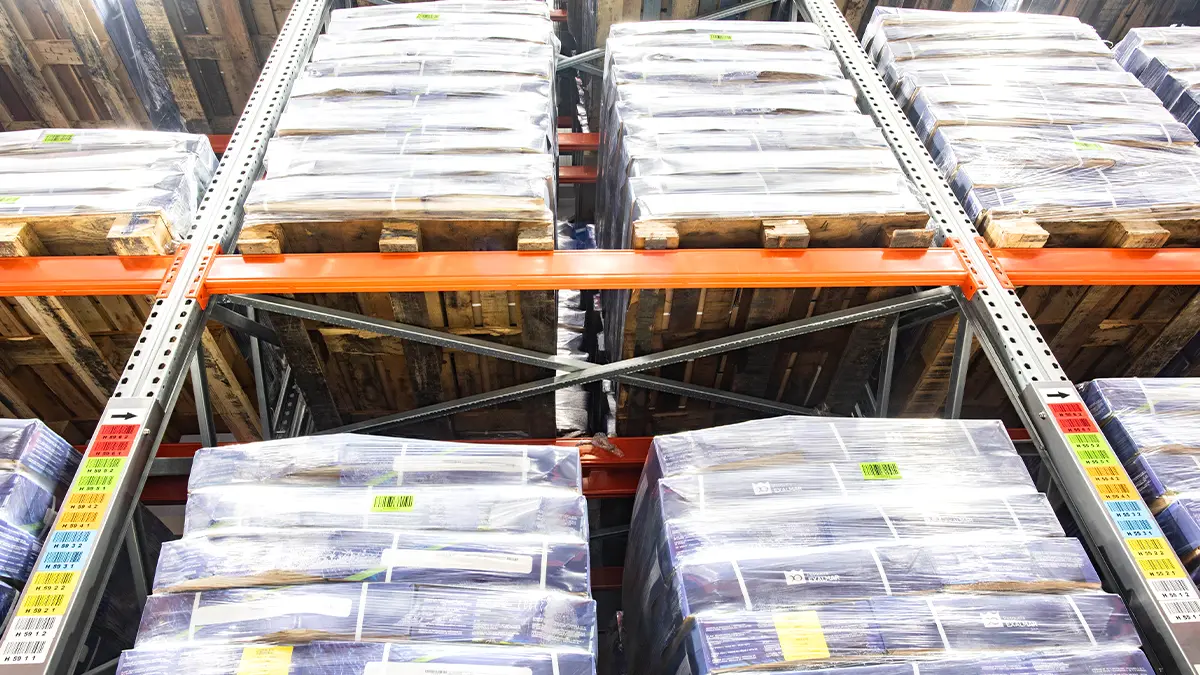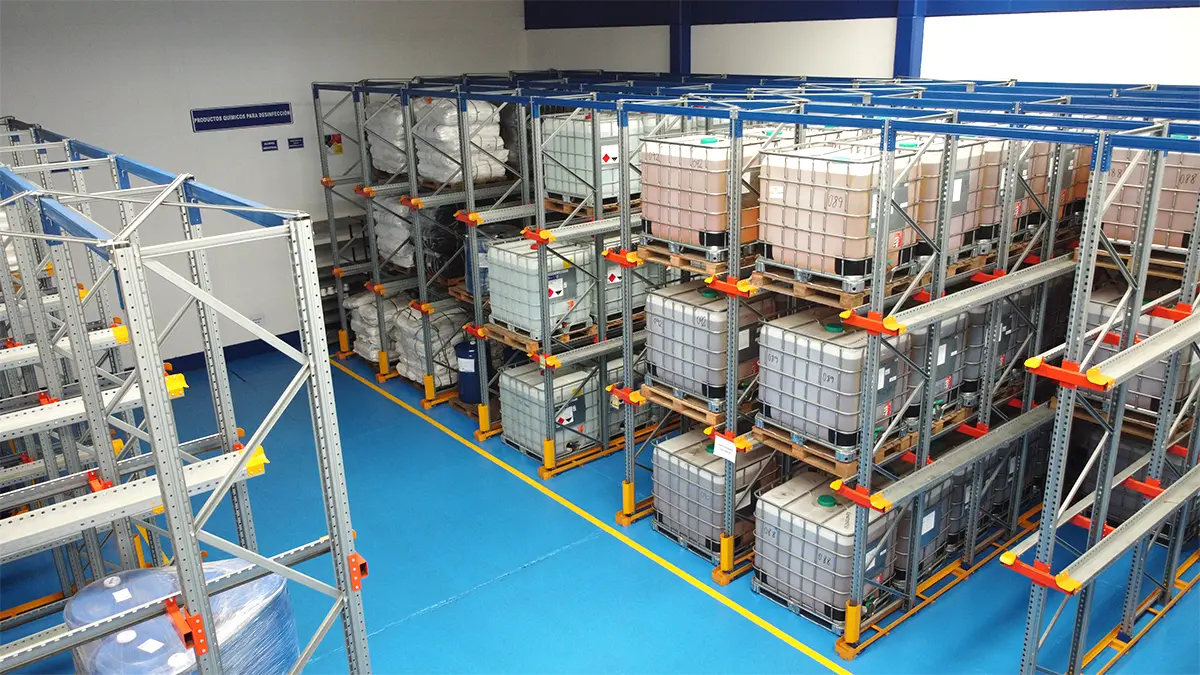Beams are one of the main elements in the basic structure of industrial racking in a warehouse. They are the horizontal component of the racking structure and directly support the weight of the unit load stored, hence their importance.
Choosing the right type of beam for the industrial racking in a storage project will be key to the correct operation of the warehouse and is a critical factor when designing and calculating the storage system.
We review below the characteristics of the beams, the various types available and the differences between them.
Characteristics and functions of a racking beam
A racking beam is fixed to the adjoining frames thanks to the connectors at its ends which are designed to fit perfectly into the drill holes of AR Racking’s upright.
The spacer with the frames through the connectors helps to form the main racking structure, creating a very firm and secure system.
The main function therefore of the beam in the racking structure is to stiffen the racking and correctly support the load stored, ensuring its stability and facilitating the loading and unloading process for efficient warehouse operations.
So that the beam can perform its support function correctly, apart from faultless manufacture, the right type of load must be chosen according to its load capacity, strength, exterior finish or design.
The beam, a component within a complex structure
Although the beam is one of the structural elements of industrial racking, it is just another piece of a complex structure carefully designed to fully optimise a company’s product storage efficiency.
The frame is another key element. It is the main vertical component and is also part of a basic structure made up of 2 uprights joined together by metal horizontal and diagonal profiles, upright bases and fixing elements.
The safety pin is a small piece situated in the hole of the upright where the connector is joined to the beam and helps to prevent the accidental displacement of the beam. It is a very simple and quick safety element.
In addition, depending on the characteristics of the racking on the beams, metal or wooden racks, panels or trays may be coupled to support special unit loads, and also support bars perpendicular to the beams.
As an additional safety element, the racking structure may also include frame or upright protectors, protection meshes or specific signage.
Types of beams according to their exterior finish
One of the ways of categorising the different types of beams is according to their type of exterior finish, where the most common would be with a painted (there are different types of paint) and galvanised.
Beams with painted finish
Beams with a painted finish are historically the most common in the sector, generally in a clearly recognisable orange colour.
For AR Racking beams with a painted finish, the process is automated and a treatment is applied with a nanotechnological product of synthetic ceramic compounds and a wash with 100% osmosis water.
This pre-treatment helps prevent impurities in the beams that could subsequently result in the corrosion of the component. Once they have been treated, the paint is applied in an automated booth, with an epoxy-polyester spray followed by a compacting treatment in an oven.

Hot-dip galvanised beams
This type of beam has a hot-dip galvanised finish where the whole piece has been immersed in a zinc bath to increase its protection against corrosion.
It is an ideal beam for outdoor warehouses or environments with aggressive conditions such as warehouses for chemical products or saline environments. Its suitability will be determined in the project study and analysis phase, choosing from a wide range of beams and strengths.

Type of beam by load capacity
We can also differentiate between the types of beams according to load capacity. Depending on the design and thickness of the beam, the load capacity will be greater or less. In addition to this, though, there are 2 different types of beams.
Double C beams
Double C beams are called as such because they consist of 2 C-shaped metal profiles welded together. These rectangular tube beams, being made up of 2 profiles, give the piece great strength and load capacity, although they may not be the most efficient option for storage systems with medium or light loads.
Thanks to the wide range of lengths, widths and strengths, these types of beams can be adapted to any unit load.
Light beams
Light beams consist of a single complete tube-shaped profile, instead of 2 profiles joined together. It is a more efficient beam in terms of use of raw material, but also designed to store lighter loads than double C beams.
It is a type of beam that can be used for both pallet load racking and picking solutions.

Z beams
In addition to the 2 models above, another type of beam is the Z beam. These beams consist of a Z shaped profile, especially designed so that metal or wooden panels that allow storage of cartons or manual goods can fit easily on them.
As a result, these types of beams are especially designed for picking solutions and will therefore have a lower load capacity.
There is also a version of the Z beam without the upper flange, as the main function of this flange is to act as a stop for the wooden support.

Single C beams
As a possible alternative to the types of beams outlined, there are single C beams. These beams are generally used for short lengths. Since they are hollow, their main advantage is that they can be used to fix diverse accessories that would be impossible in a light beam or double C beam.
Continuous beams
To build complex clad-rack warehouses, occasionally a very different type of beam to the conventional models mentioned above is used. These are continuous beams.
These beams do not have connectors but are instead very long beams that span various modules of the structure. They demonstrate more efficient behaviour due to their great length and their multiple supports, but they are only used for specific cases such as clad-rack warehouses because they are not a flexible or adaptable system at all in levels.
If you want to know which beam is the most appropriate for the storage system to be installed in your company’s warehouse or distribution centre, you can contact our team which will advise you on the best solution.




